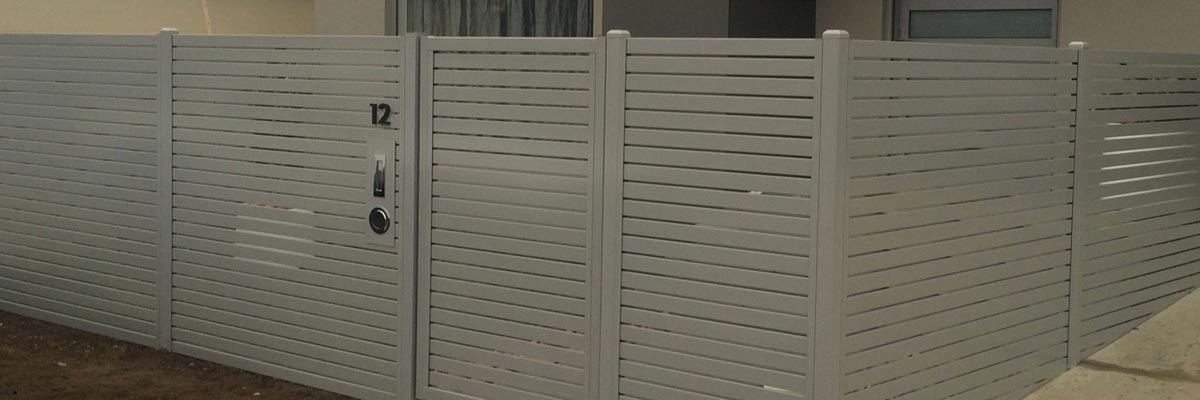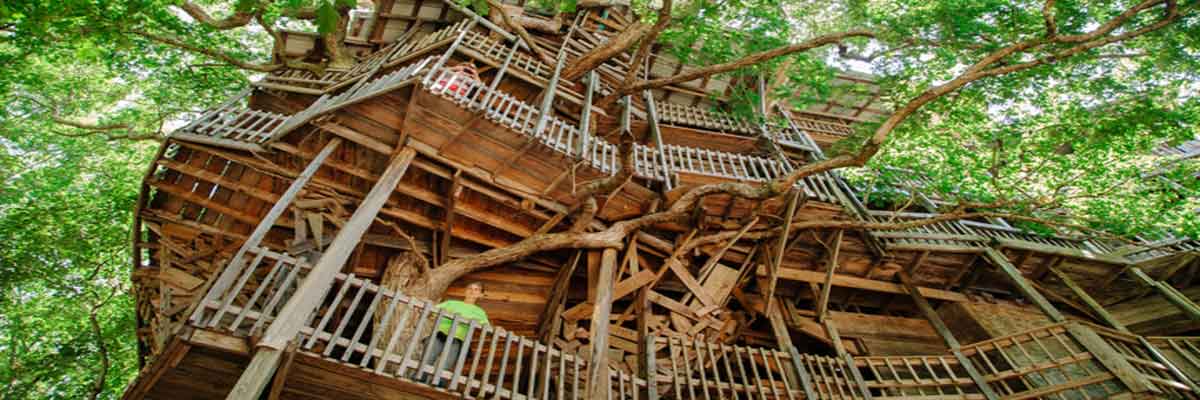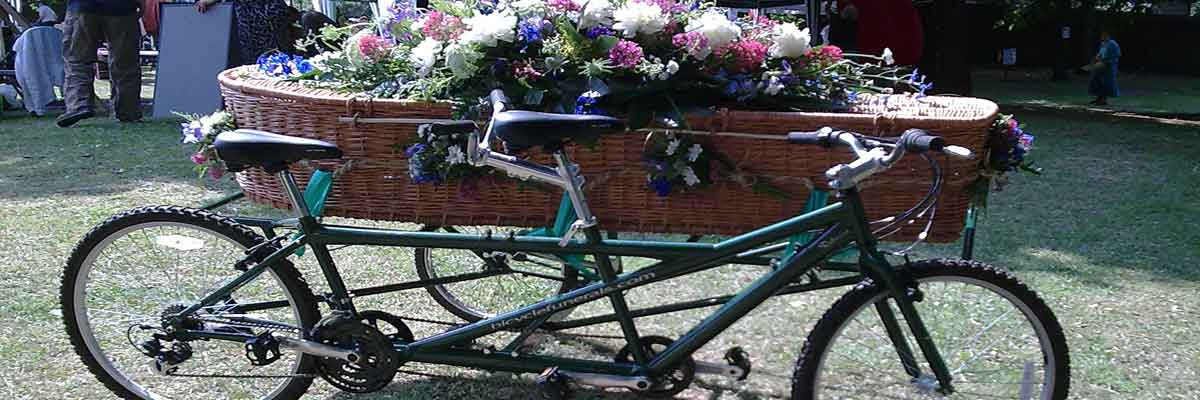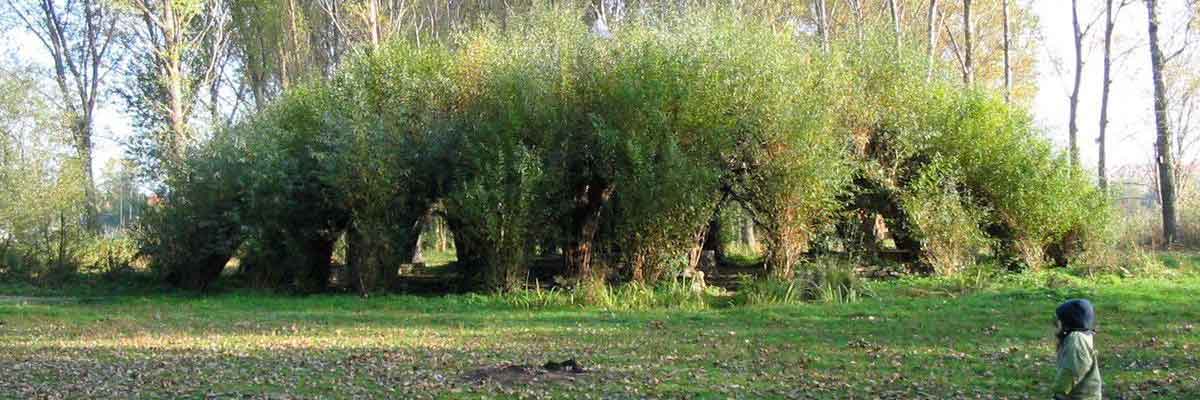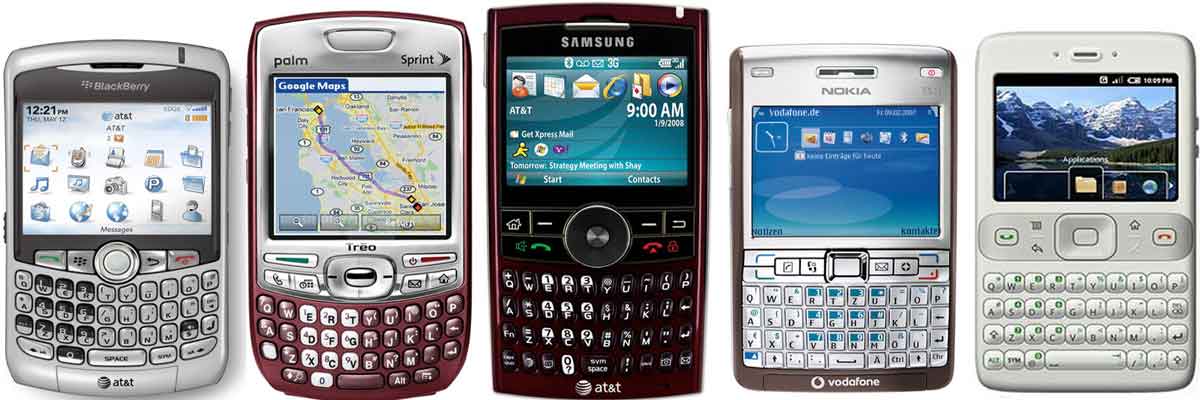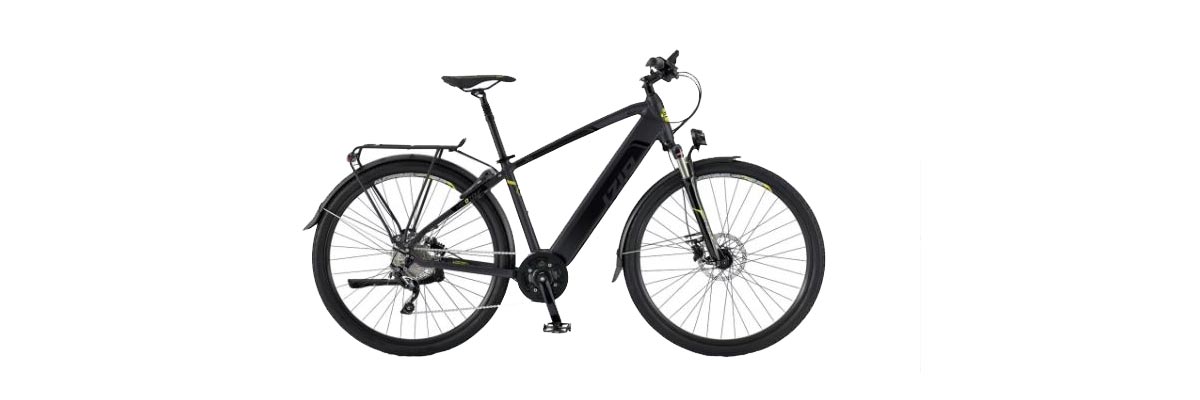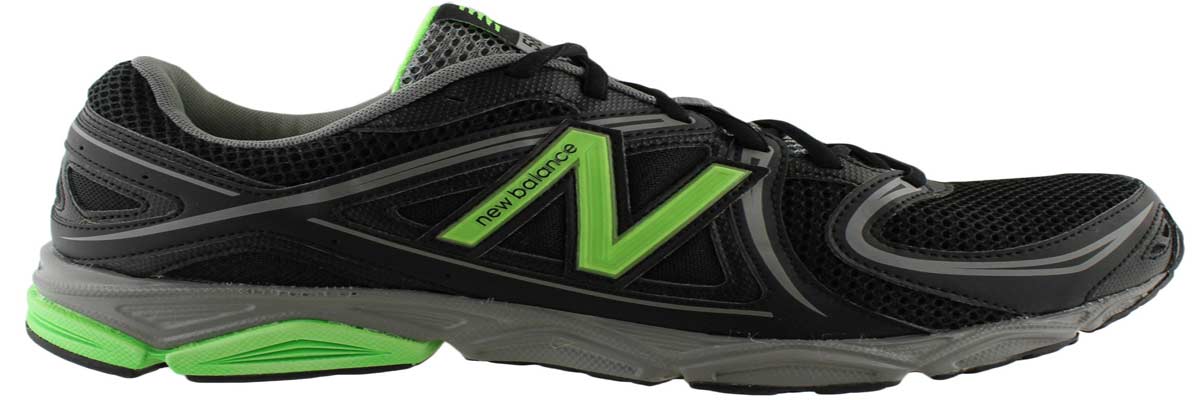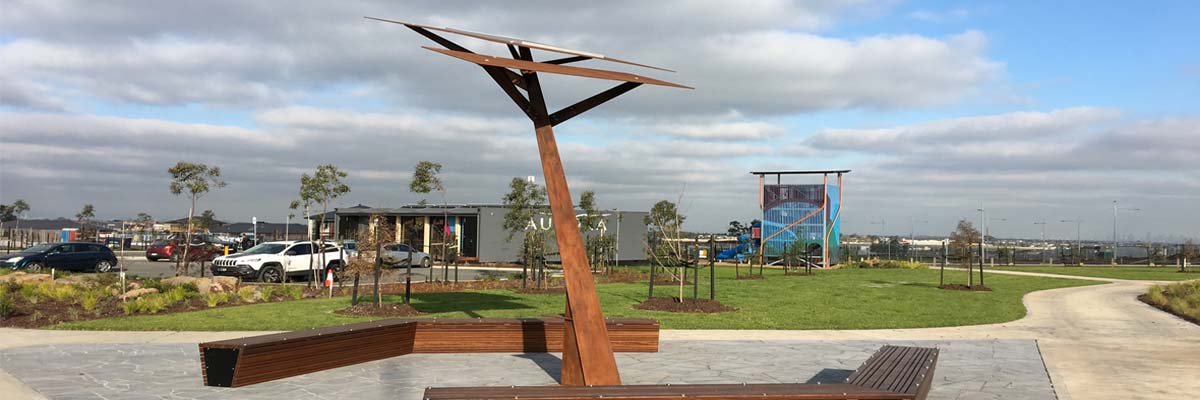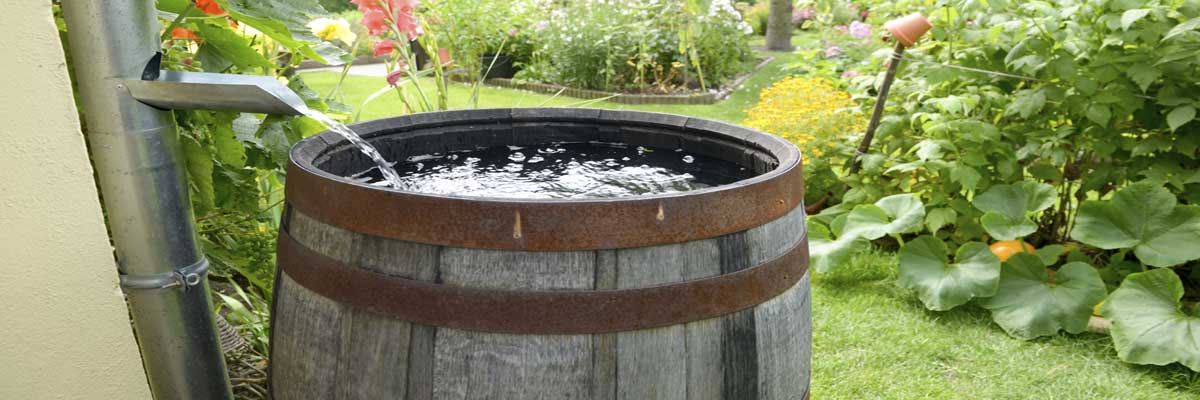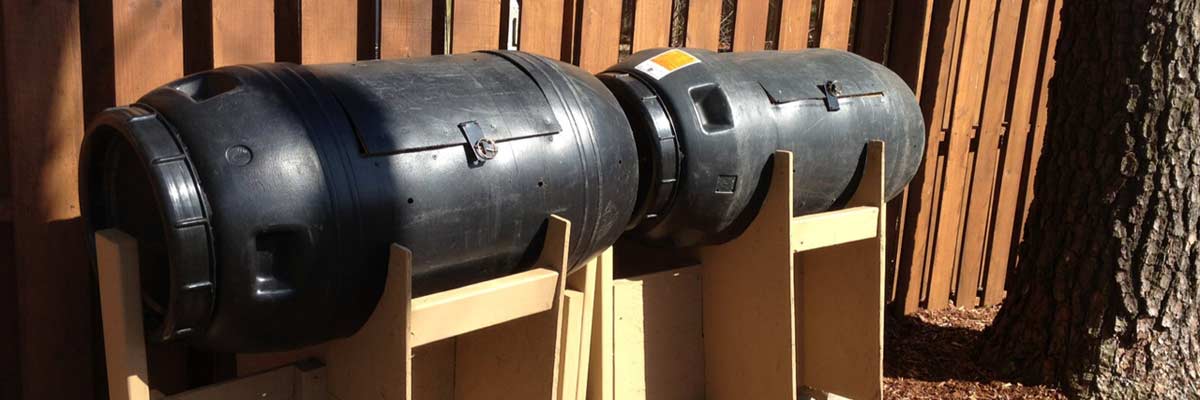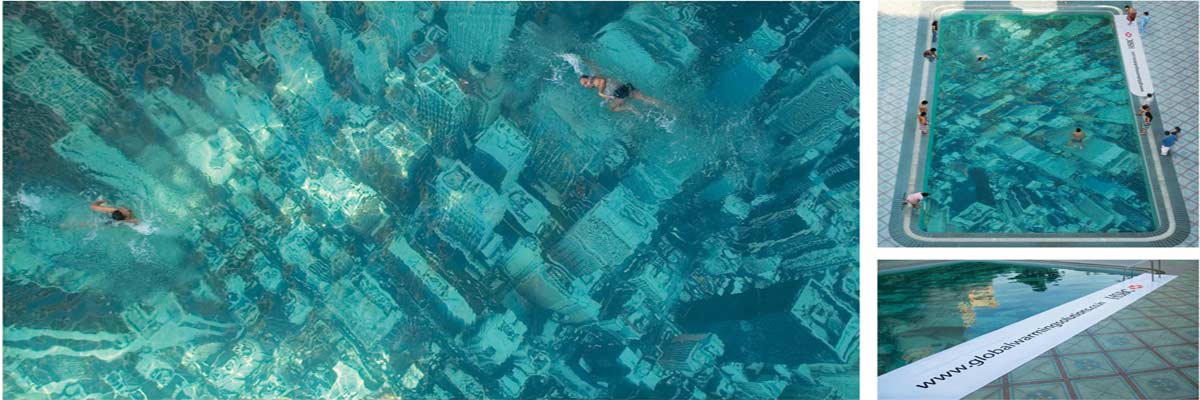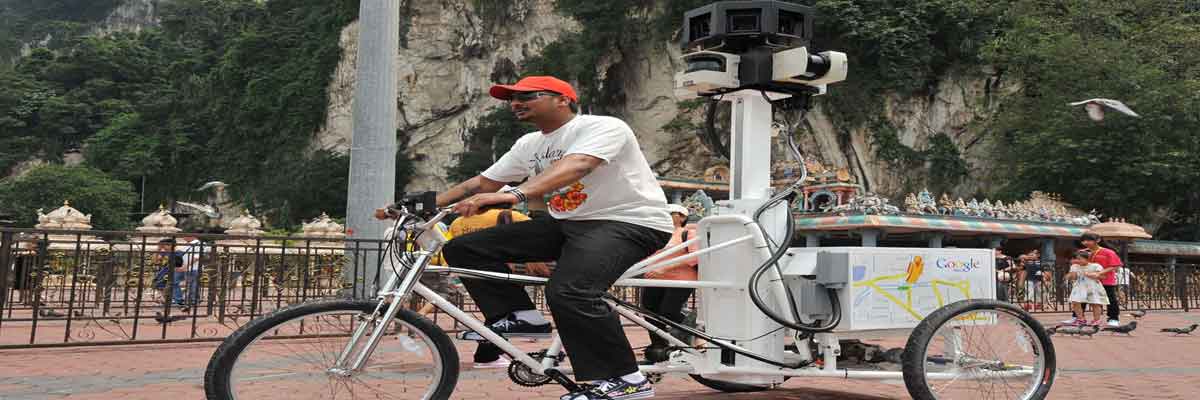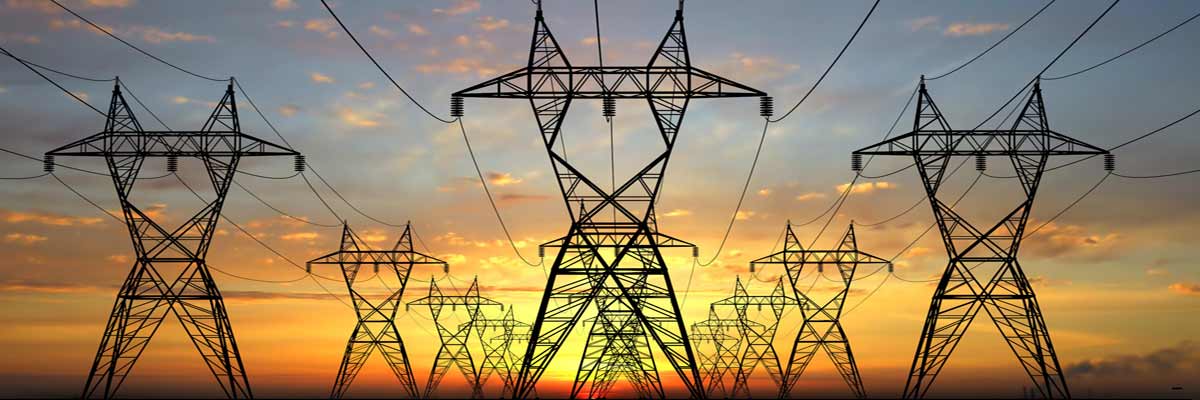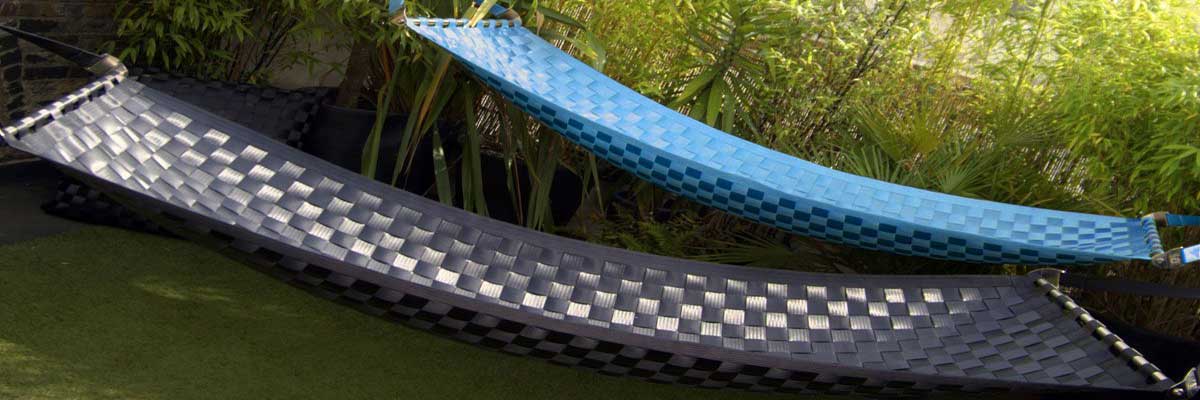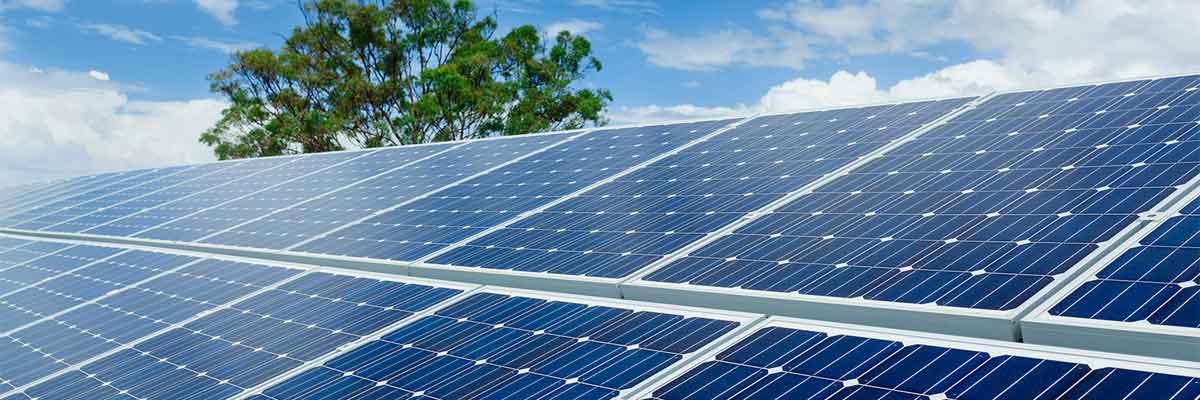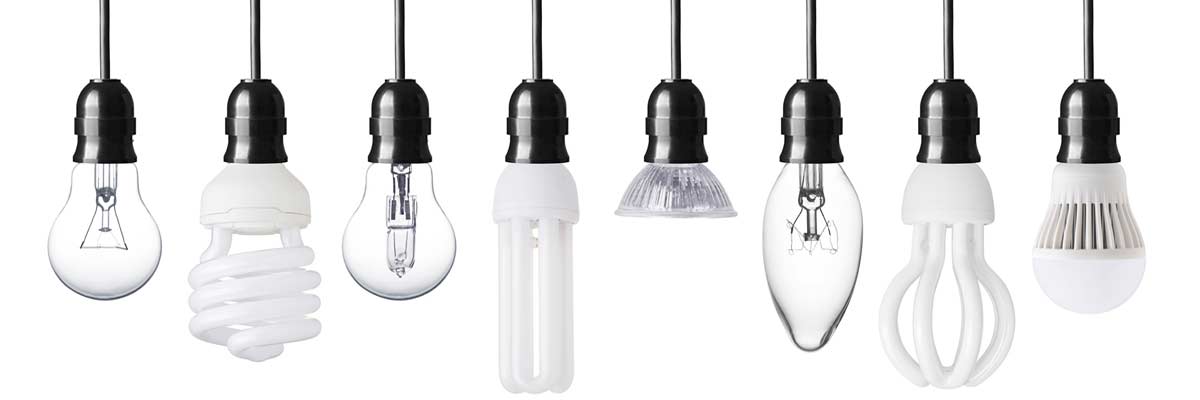Why Security Fencing is Classed as Environmentally Friendly
Security fencing is an essential part of everyday life in most western countries these days. It does a great job of keeping intruders out of certain secure areas while protecting those within, but is it environmentally friendly? Fencing of all kinds is there for a good reason and sometimes this is to protect our unique flora and fauna from harm.
Consider these reasons why such fencing is environmentally friendly:
- If such a fence is not there, plants and animals can be injured or killed from being driven over, or walked on. This may not necessarily be done on purpose, but the result is the same; the destruction of habitat and thus, of the species that need it for their survival. So it can be said that such a fence is environmentally friendly.
- Such fencing is usually made from wire, steel or galvanise iron, or a combination of all these materials. In many cases there may be concrete posts or footings as well. All these materials are durable and long-lasting, requiring little maintenance over the years, another tick for being friendly to the environment.
- There are many different kinds of fencing and what is used depends on the purpose of the fence. Commercial fencing can be made to look visually appealing by the use of such elements as limestone blocks, but in most cases a fence looks neat and tidy anyway, as it separates one area from another and defines space.
- It can be used to ensure foot or vehicular traffic causes the least amount of harm to the environment and can keep many different types of native or farm animals and pets separated from each other and thus, free from harm.
- Security fencing is also used to keep our precious children safe from wandering away and from other dangers, so it does many essential jobs well.
- Many types of fencing can be recycled by being dismantled and used in another location when necessary, so that too, makes it environmentally friendly. Steel and iron can also be melted down and re-formed into something else, making those kinds of fences highly recyclable.
Crazy Treehouse Could Probably House A Small Village
When you were a kid, did you ever dream up the goal of one day building the largest treehouse ever? For Horrace Burgess in Tennessee, that dream became a reality with this gargantuan structure that features 11 floors and more than 8,000 sq.ft. of real estate. From ZuZuTop,
The greatness of Horrace Burgess treehouse is not subject to the tree on which it is based alone though. As it turns out, while the tree in question does contribute something to the height of the treehouse, the owner’s efforts also go a long way towards this greatness possible. The tree’s contribution to the 97 foot edifice is only 80 feet, so that the other 17 feet on top of the basic 80 foot are from Horrace’s sheer effort. To be sure, we can’t begrudge the base tree of a claim to greatness too: a tree towering at 80 feet in height and with a diameter of over 12 feet is a real wonder.
Incredibly enough, Burgess isn’t done yet. This whole project, which he estimates to have cost north of $12,000, is still a work in progress. Tower of Babylon anyone?
The Bike Hearse: Your Green Trip To The Afterlife
How’s this for a unique and eco-friendly way to get from the funeral home to your final resting place? Wade Lind, owner of Sunset Hills Cemetery in Eugene, Oregon came up with the “bike hearst” as an option for those really looking to limit their impact once they’ve passed on. Let’s hope there aren’t many hills along the way.
The Green Picture: How Far Away Is The Nearest McDonald’s?
Thanks to Stephen von Worley at Weather Sealed, we now have a pretty decent visual of how fast food chain McDonald’s dominates our country. Worley mapped the 13,000+ locations of McDonald’s across the lower 48 states — presenting a beautiful, but depressing look at the density of the Mickey D’s empire. From his report,
“For maximum McSparseness, we look westward, towards the deepest, darkest holes in our map. There, in a patch of rolling grassland, loosely hemmed in by Bismarck, Dickinson, Pierre, and the greater Rapid City-Spearfish-Sturgis metropolitan area, we find our answer. Between the tiny Dakotan hamlets of Meadow and Glad Valley lies the McFarthest Spot: 107 miles distant from the nearest McDonald’s, as the crow flies, and 145 miles by car!”
Note to self: Move to Dakota.
Auerworld Willow Palace: Celebrating 10 Years Of Growing Green
Continuing on our post from yesterday about the living root bridges of India, we present to you this beautiful creation now celebrating 10 years.
Started in 1999 by architect Marcel Kalberer and a group of 300 volunteers, the Auerworld Willow Palace is a canopy of strategically-placed trees woven together. The project was based on ancient techniques used in both Mesopotamian and European structures. The Willow Palace has proven so popular, that it is now the focal point of “Full Moon” celebrations that draw thousands.
Since Kalberer began creating natural structures back in 1984, he’s helped design more than 70 additional projects throughout Europe — and inspired thousands more willow designs around the world.
Solar-Powered Sleeve Coming To iPhone, Blackberry, Other Mobile Handhelds
We’ve seen plenty of solar-charger accessories for mobile phones and other gadgets, but this is the first one that appears to attach seamlessly. Created by product design firm MotionTouch for a company called Powcell, this solar-powered sleeve slides onto the back of a mobile phone handset and uses light to charge the unit.
The large solar panel provides the greatest surface area for light-capture and maximises the sleeve’s efficiency, including working in some ambient light conditions. And Powcell continues to charge its internal battery even when removed from the phone – so when reconnected it provides talk-time even if the device battery is exhausted.
Ahead of full production the sleeve has attracted considerable interest from major phone manufacturers, which have even approached Powcell about sleeves for future, yet-to-launch models of their phones.
IZIP Trekking Enlightened Hybrid-Electric Bike: First Impressions
If you’ve ever lived in or visited Ithaca, NY your probably familiar with the phrase “Ithaca is gorges”. It’s a funny little saying that gives a good indication of the region’s topography — hills, hills, and steeper hills. In fact, the inclines we have around here would make even Lance Armstrong break a sweat. So, it was with great expectation that I took advantage of an opportunity to review the IZIP Trekking Enlightened hybrid-electric bicycle from Currie Technologies. Could it be possible to bike to work and not immediately have to take another shower?
I’m still figuring that out — and will have a full review shortly — but so far, I have to say that I’m very impressed with the technology being utilized in this bike. First off, this isn’t one of those bikes that you hit a switch and kick back while the electric motors putts you along. The IZIP instead is an electric-assist — giving you some extra torque to help you up some tough inclines. To that end, you still have to pedal. The beauty of this system is that you can choose to have it on or off — or at different levels of assist. About to hit a hill and want some support? Simply press the “+” button on the left handlebar and watch the LCD indicator light a few bars higher. Want to back off? Hit the “-” button. It’s as simple as that — and believe me, you still get a workout.
New Balance 070 Eco Shoes Review: Green Kicks, Low Impact
More often than not, it’s great to have some solid connections in the green world. Shea Gunther— one of the top green bloggers on the web and twitter — casually threw a question my way earlier this week: Would I like to try a pair of New Balance’s first ever green shoe for their “Eco-prefer Collection”. Would I?!
Less than 12 hours after I accepted, a shiny pair of New Balance 070s arrived on my doorstep. I tore open the box, admired the bold colors, and have pretty much been wearing them since. But first, let’s talk about what it is exactly that makes these shoes “green”.
Obviously, New Balance set out to completely re-think they way they design shoes in as environmentally-friendly a manner as possible. To that end, the 070 fits together like a kind of puzzle to reduce waste. The outsole features a rice husk fill that decreases the amount of rubber used in the production of the shoe. The insert, as well as all synthetics, are made from recycled materials. The upper materials use a combination of recycled polyester and natural materials. The upper is also designed so that everything has a symmetrical opposite. This was done to minimize waste as much as possible when cutting the material for the shoes.
Enjoy A Private Solar Shower In This Personal Pop-Up Tent
Enjoy solar showers, but really want to be completely naked in the process? Unless you’re in a nudist colony, that option might be not available on a public beach. However, this innovative (and stylish) pop-up privacy tent from Guide Gear will hide your bits and bops while giving you a clean, hot rinse. The 6.5 lb tent is quick to setup and includes a 5-gallon PVC Solar Shower. Said one recent reviewer:
Our family has always been more on the “minimal” side for car camping trips, but with my 23 year old daughter and her friends along on our recent trip, we needed a shower. We bought a Zodi water heater and this pop up shower tent. Great decision! The tent pops up in a second, nothing to put together and added almost no weight or bulk to our gear. The olive green material provided total coverage, blended nicely with the outdoor terrain, and had plenty of room for big guys. The 3 adjustments we made were adding a clip/clothespin to attach the shower head to the top, a chair right outside to hang towel and clothes (it cannot support much weight), and a large plastic pan to stand on. With those items, we had eight of us showering daily with no hitch.
That being said, you could also just go and jump in the nearest river. While this item is indeed handy, it may just be another piece of “baggage” that’s rather unnecessary when camping. To each their own, however — you be the judge.
Solar Trees Offer Semi-Portable Solution For Energy Generation In Tight Spaces
I just came across this “Solar Tree” design from Gurdeep Sandhu and thought it to be a creative take on energy generation. As he explains,
With a little space in your backyard, installing this solar tree will not be a problem. During the day just wing-out the panels and let them absorb the glory of the sun; and in the evening fold them back. If you need to move house, just uproot it and take it along with you. Else if technology changes, you can even upgrade the panels for maximum benefit. Silent, efficient, cost effective are some of the virtues that sound music to my ears. What’s more you can either directly hook it up to appliance during the day or store the energy for later use. The sturdy metallic silver aluminum frame looks neat and tidy when packed up.
Colorado Legalizes Rain Water Harvesting. Kind Of.
Back in June of last year, we dropped the story that harvesting rain water in Colorado was actually an illegal activity. We commented on just how dumb this law was — and over 100 comments later, many of you agreed. Almost a year later, the Colorado legislature has revised the draconian law to give some homeowners rights the water that falls from their roofs. But not everyone will be happy. From the article,
If you live in the city, don’t install a barrel under your gutter spout just yet. The legislation lets residents on wells collect rain and establishes 10 pilot projects for new developments. Residents on municipal water still can’t legally collect rain, and water suppliers are leery of legislation that would let them. “All the water was spoken for here in the Arkansas Basin 100 years ago or more,” said Kevin Lusk, water supply engineer for Colorado Springs Utilities. “If the water falls as rain, that’s water that was going to get to the stream system, and somebody already has dibs on it, and if somebody intercepts that, it’s the same as stealing.”
Worm Bins: Three Effective Wiggly Composting Machines
I have a healthy appreciation for Worm Bins after managing to get through a winter with a DIY version in my basement. Those little red wigglers made fast work of my food scraps and were a nice alternative to trudging to the compost pile in the cold. Plus, the “instant compost” went right into the soil mix for my seedlings and proved a nice boost for spring planting. However, I know my system rather sucks — not enough aeration, poor drainage, and no easy way to access the all-valued “worm tea”. There are plenty of excellent instructions for making your own worm bin online (I took over my current bin from a friend) — but I thought it would worth it highlighting some of the brands out there for those that want to get started right away.
Can-O-Worms | Price: $129.00 (can probably find it cheaper)
Global Warming Swimming Pool Delivers Clever Message
Back in November, British banking giant HSBC did a clever thing with a swimming pool: they took a picture of New York City from above and applied it to the bottom to make a point about climate change and rising sea levels. The effect is nothing short of amazing. My eyeballs are still having trouble not believing these people aren’t swimming a thousand feet above the NY skyline. Granted, sea levels would never rise that much — and the water probably wouldn’t be crystal clear (or toxin-free) — but, it still makes you think.

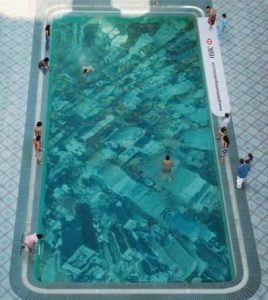
Google Street View Camera Goes Low-Tech With Trike Version
Google’s Street View fleet has a new low-tech edition: the Google Trike. For those not familiar with the street capture technology, it’s a feature on Google Maps that allows you to view actual images of a street location — in 360 degrees. Beyond the fascinating technology that puts this all together — what’s even more impressive is the army of employees out there on the roads of America (and almost every other country) taking panoramic snapshots using the Google camera vehicles.
Of course, cars (thankfully) aren’t allowed to go everywhere. But that hasn’t stopped Google. The search engine giant has instead hacked a trike to carry the necessary equipment to get the digital deed done. From Autobloggreen,
The three-wheeled, human-powered overgrown tricycles carry 250 pounds of ballast in the form of “a mounted Street View camera and a specially decorated box containing image collecting gadgetry,” says the internet giant. All that extra heft reportedly requires a “specially trained super fit” rider. Google’s new trikes will be deployed first in Genoa, Italy, this spring. Assuming that launch proves successful, Google will send its pedal-powered cameras to the United Kingdom, where they’ll point their lenses towards a slew of famous British landmarks.
Wind Turbines On High Voltage Power Line Towers Wins NextGen Contest
I’m sure many environmentalists have passed power line towers while cruising in vehicles and wondered aloud, “Why can’t we just throw some wind turbines up there?” In fact, earlier last year, Ericsson unveiled the first-ever cell phone tower with a vertical-axis wind turbine integrated. If we can do it in cell phone towers, why not transmission towers?
That’s the question two architects and an engineer from France used as the starting point for their “Wind-It” concept — a a design to place wind turbines inside existing high-voltage electricity pylons. They’re also the winners of the 2009 Metropolis Magazine Next Generation Prize Challenge: “FIX OUR ENERGY ADDICTION.” $10K was given to the team to take their idea to the next level. From the article,
Recycled Seatbelt Hammock Will Rock You Safely To Sleep
After discovering this recycled seatbelt hammock from TING, I’m convinced that there’s no limit to the clever reuse of discarded materials.
These gorgeous handwoven hammocks are made from reclaimed seatbelt webbing. They are water resistant, comfy, and most-definitely a conversation starter. Colors available include bright shades like hot pink, orange, camel, turquoise, chocolate or black. The company also makes a line of recycled pillow covers that look just as pretty. But recycled art comes with a price: $585 for each hammock. Ouch.
The Largest Wind Turbine Propeller We’ve Ever Seen Is 6MW Of Enormity
Remember that picture we had a few months back of a helicopter taking off of an enormous wind turbine? Yea, that 3.6MW behemoth today looks normal compared to this 6MW monster being installed in Germany. Apparently, it’s one of the two currently going up in the city of Hamburg. Huge — just huge.
Inflatable Shower Curtain Will Help Save Water, Kill You
There are lots of ways to take shorter showers — saving you money, water, etc. We’ve seen shower timers and spouts that turn different colors as time goes on — but the inflatable shower curtain is the first one that seriously forces you to get in and get out, lest you want to suffocate or become trapped.
The idea was designed by Elisabeth Buecher who answered the question: “How can your shower fight water overconsumption in either a disturbing or a gorgeous way, using innovative materials, printing techniques and inflatable technology?” Her response: This shower curtain slowly inflates around you while you shower. It leaves you only a few minutes to take your shower before trapping you.
She’s also got one with inflatable spikes that slowly push you out over a period of time. I actually prefer that one to getting trapped in plastic.
Developing Rooftops for Solar Power
It has come to my attention recently that the real estate trust Prologis is developing the rooftops of their existing buildings by contracting to lease the space to power companies to install solar panels.
From the press release:
Headquartered in Denver, Colo., as a manager and developer of real estate, ProLogis is actively seeking out electric utilities to lease out its rooftops as a way to earn extra income with no capital investment, while meeting the company’s goal of contributing to global sustainability.
As a real estate investment trust, ProLogis isn’t interested in owning the solar installations, but rather in engaging utilities as a renter of its space. Utilities make solid tenants that will enter long-term leases, as most power-purchase agreements for solar power generation are for 15 to 20 years.
Read More
The Green Picture: Glowing Array Of Fluorescent Bulbs Powered By Ambient Electricity
You know those electric fields from power lines that some people are always complaining about? Turn out they may have something be worried about. At least, that’s what I can surmise after viewing these photos of an art project on an English farm. The installation is called FIELD and creator Richard Box came up with the idea after hearing about a colleague playing light sabergames with a fluorescent tube beneath power lines in his backyard. So, he bribed a local farmer to let him take a crack at installing 1301 fluorescent bulbs underneath his power lines and “voila” — instant ambient energy. The UK Guardian explains a bit more:
A fluorescent tube glows when an electrical voltage is set up across it. The electric field set up inside the tube excites atoms of mercury gas, making them emit ultraviolet light. This invisible light strikes the phosphor coating on the glass tube, mak ing it glow. Because powerlines are typically 400,000volts, and Earth is at an electrical potential of zero volts, pylons create electric fields between the cables they carry and the ground. Box denies that he aimed to draw attention to the potential dangers of powerlines. “For me, it was just the amazement of taking something that’s invisible and making it visible,” he says. “When it worked, I thought: ‘This is amazing.’”
My home is right under some power lines. Needless to say, I’m moving.
